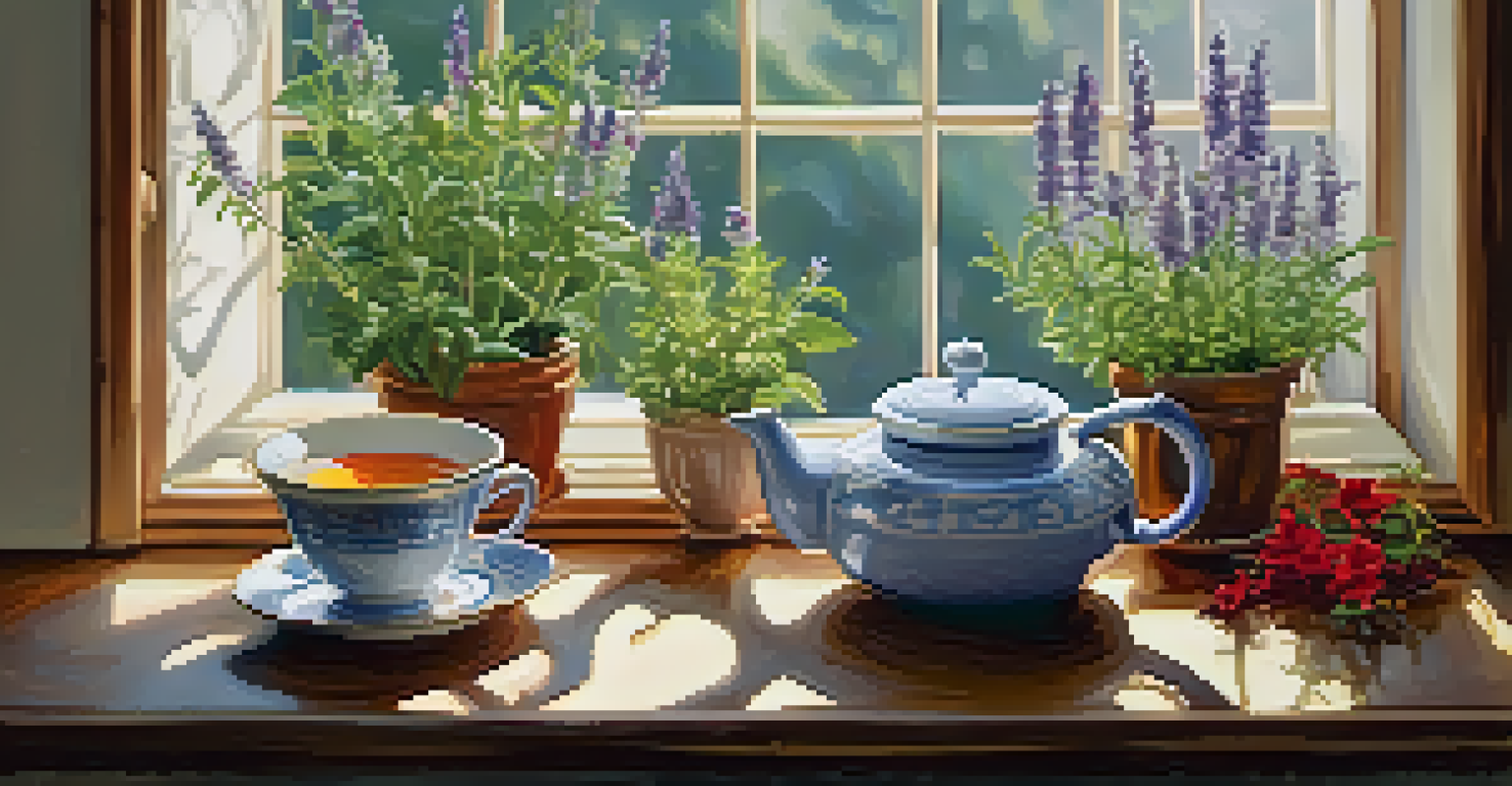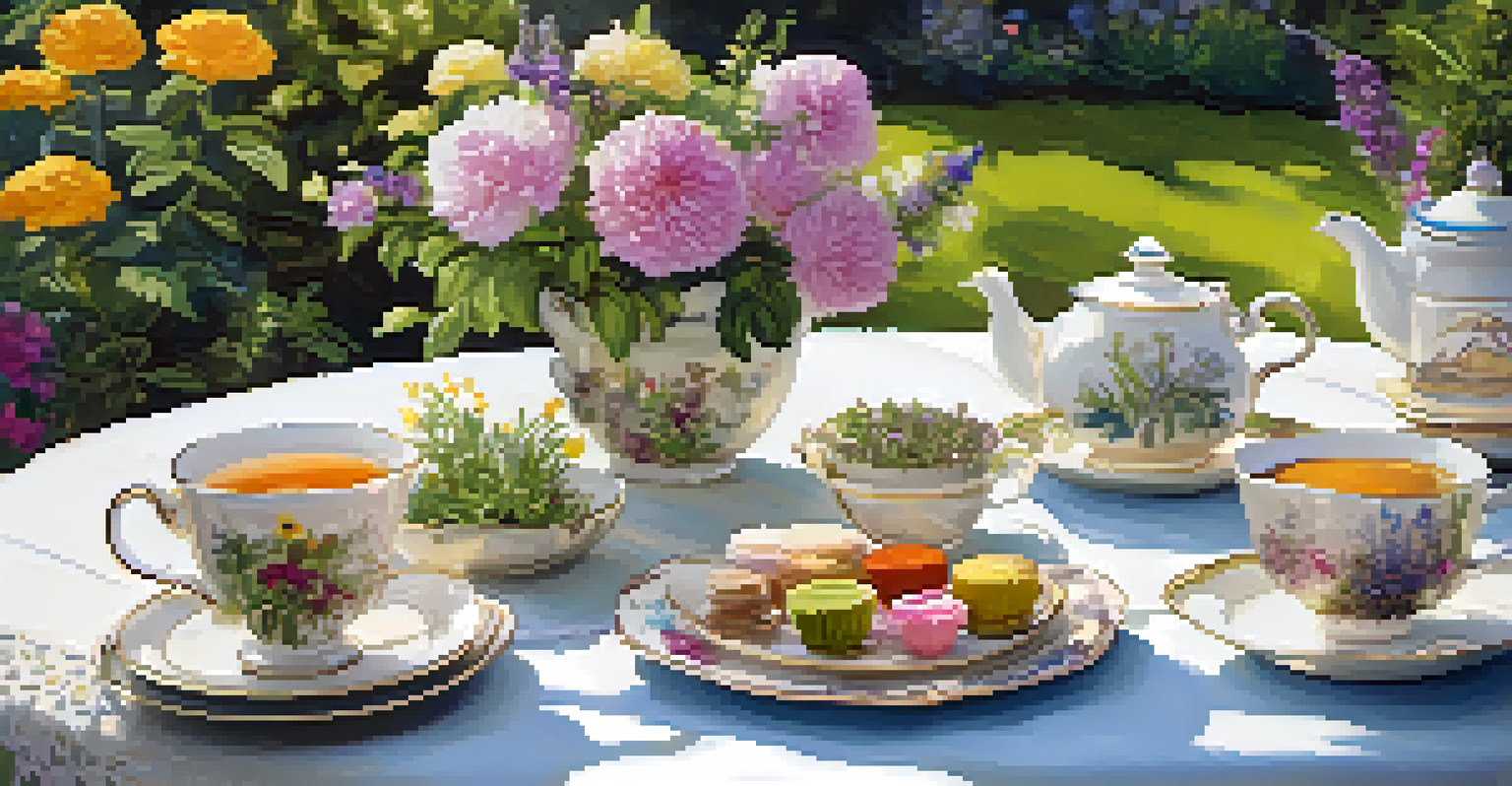Herbs for Tea: Grow Your Own Herbal Infusions

Why Grow Your Own Herbal Tea Ingredients?
Growing your own herbs for tea is not just rewarding; it’s a delightful journey into the world of flavor and wellness. Imagine stepping into your garden and picking fresh mint for your evening tea, knowing exactly where it came from. Plus, homegrown herbs can be far more flavorful and aromatic than store-bought options, allowing you to create unique blends tailored to your taste.
Herbs are the most potent and versatile of all medicines. They are natural, safe, and effective, and they are food. They can heal you, nourish you, and help you to live a more vibrant life.
Not only does growing your own herbs provide fresher flavors, but it also gives you control over the growing conditions. You choose whether to use organic practices, which can lead to healthier plants and a more sustainable gardening experience. This connection to your food can enhance your appreciation for each cup of tea you brew.
Furthermore, the process of nurturing plants can be therapeutic. Tending to a garden offers a sense of accomplishment and can be a perfect way to unwind after a long day. When you sip your homemade herbal tea, you’ll feel the benefits of both the herbs and the joy of having grown them yourself.
Essential Herbs to Start Your Herbal Tea Garden
When it comes to choosing herbs for tea, some popular options include chamomile, peppermint, and lemon balm. Chamomile is known for its calming properties, making it a great choice for a bedtime tea. Meanwhile, peppermint adds a refreshing flavor and can aid digestion, perfect for an afternoon pick-me-up.

Another fantastic herb to consider is lemon balm, which has a lovely citrusy aroma and is often used to reduce stress. If you're feeling adventurous, try growing more unique herbs like hibiscus or lavender for a colorful twist in your tea blends. Each herb offers its own flavor profile and health benefits, expanding your herbal tea repertoire.
Grow Herbs for Fresh Flavors
Cultivating your own herbs not only enhances the flavor of your tea but also allows you to control growing conditions for a healthier experience.
It’s also important to think about the growing conditions of these herbs. Most of them thrive in well-drained soil and require plenty of sunlight. By selecting herbs that suit your local climate and your gardening space, you can ensure a bountiful harvest throughout the growing season.
Getting Started with Growing Herbs for Tea
To start your herbal tea garden, you first need to choose a suitable location. Look for a spot in your yard or on your balcony that receives at least six hours of sunlight each day. If outdoor space is limited, don’t worry! Many herbs can thrive in pots indoors, making it easy to enjoy fresh flavors year-round.
The best way to find yourself is to lose yourself in the service of others.
Next, prepare your soil. A mix of potting soil and compost can provide the nutrients your herbs need to flourish. Make sure to choose pots with drainage holes if you're planting in containers to prevent waterlogging, which can harm the roots of your herbs.
Once your soil is ready, it’s time to plant! Follow the seed packet instructions for planting depth and spacing. If you’re using seedlings, gently transplant them into your prepared soil. Water them well, and watch as they grow, turning your garden into a fragrant oasis.
Caring for Your Herbal Plants
Caring for your herbs doesn't have to be daunting. Most herbs are relatively low-maintenance, requiring just regular watering and occasional pruning. Be sure to check the moisture level of the soil; it should be damp but not soggy. Overwatering is a common mistake that can lead to root rot, so always err on the side of caution.
Fertilizing your herbs can also help them thrive. A balanced, organic fertilizer applied every few weeks can promote healthy growth and vibrant flavors. However, be careful not to over-fertilize, as this can lead to overly lush plants with less intense flavors.
Essential Herbs for Tea
Popular herbs like chamomile, peppermint, and lemon balm can provide various flavors and health benefits, making them perfect for your herbal tea garden.
Lastly, keep an eye out for pests. Common garden pests like aphids and spider mites can occasionally invade your herb garden. If you notice any unwanted visitors, consider natural remedies like insecticidal soap or introducing beneficial insects like ladybugs to keep them in check.
Harvesting Your Herbs for Tea
Once your herbs are growing well, it's time to think about harvesting. The best time to pick your herbs is in the morning after the dew has dried, but before the sun gets too hot. This is when the essential oils are at their peak, ensuring the best flavor for your tea.
When harvesting, use clean scissors or garden shears to snip off the leaves or stems. Be sure to leave enough leaves on the plant to ensure healthy regrowth. A good rule of thumb is to harvest about one-third of the plant at a time, allowing it to continue thriving.
After harvesting, rinse your herbs gently and pat them dry. You can use them fresh or dry them for later use. To dry herbs, simply hang them upside down in a dark, dry place until they crumble easily. This way, you can enjoy your homegrown herbal tea even when the growing season is over.
Brewing Your Herbal Tea: Techniques and Tips
Brewing your herbal tea is where the magic truly happens. Start by boiling fresh water, and once it reaches a rolling boil, remove it from the heat. The temperature of the water can significantly affect the flavor; delicate herbs like chamomile steep best in slightly cooler water, around 200°F.
For loose herbs, a general guideline is to use about one tablespoon of dried herbs or two tablespoons of fresh herbs per cup of water. Place them in a tea infuser or directly in the pot, and let them steep for about 5 to 10 minutes, depending on your flavor preference.
Harvesting and Brewing Tips
Knowing the best practices for harvesting and brewing your herbs can elevate your tea experience, ensuring rich flavors and maximum enjoyment.
Feel free to experiment with your herbal blends! Mixing different herbs can create a unique taste experience. For instance, pairing lavender with chamomile can yield a soothing floral infusion, while adding a hint of ginger can give a spicy kick. The possibilities are endless, making each cup a delightful adventure.
Enjoying the Benefits of Your Herbal Infusions
Enjoying your homemade herbal tea is not just about the taste; it's also about the numerous health benefits that come along with it. Many herbs boast medicinal properties—for instance, chamomile is known for its calming effects, while peppermint can aid digestion. By choosing which herbs to grow, you can tailor your tea to meet your wellness goals.
Moreover, the ritual of brewing and sipping tea can be a moment of mindfulness in your busy day. Taking a few minutes to enjoy your tea can provide a welcome break, helping you to relax and recharge. This simple act can contribute to overall well-being, making your tea time a cherished daily practice.

Finally, sharing your herbal creations with friends and family can be a joy in itself. Hosting a tea party with your unique blends can create lasting memories and introduce others to the beauty of homegrown herbs. So, brew a pot, gather your loved ones, and enjoy the fruits of your labor together!